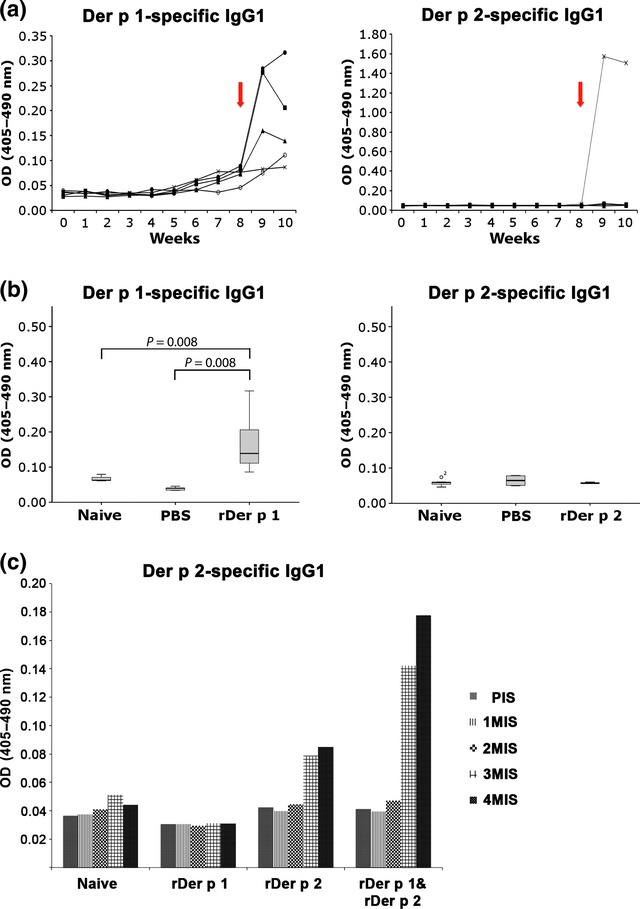Figure 1.

(a) Percutaneous application of 10 μg rDer p 1 for 8 weeks led to low titres of allergen-specific IgG1. After the increase in allergen dose (time point marked by red arrow), treatment with rDer p 1 (left panel showing individual mice) led to the induction of moderate amounts of allergen-specific IgG1 antibodies, whereas only one mouse of the rDer p 2-treated animals produced specific IgG1 (right panel). The treatment scheme is shown in Fig S1a. (b) As compared to naïve and PBS-treated animals, rDer p 1 application resulted in significant induction of specific IgG1 antibodies (P = 0.008; left panel), while application of rDer p 2 on the skin failed to induce antibodies with the exception of one animal (OD: 1.8 shown in panel a) but not included in panel b). (c) In a second set of experiment (n = 8 per group), an additional group of mice was pretreated for 30 min with rDer p 1 (100 μg) before applying rDer p 2 (100 μg) according to the scheme shown in Fig. S1b. The coapplication with the cysteine protease Der p 1 rendered enhanced induction of anti-Der p 2 IgG levels.
